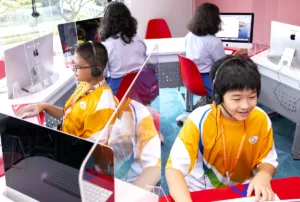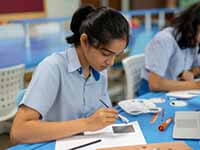Introduction to Singapore
The preschool school scene in Singapore has altered and evolved at a faster rate than before. There has been a tremendous desire to improve the quality of preschool education in the previous six years, as seen by the drafting of new legislation and the implementation of new initiatives.
These policy changes have resulted in significant changes to Singapore’s preschool education quality standards in several areas.
The context of Singapore’s pre-school education policy and practice, as well as recent significant reforms enacted by the Ministry of Education (MOE) to support high-quality kindergarten education, are discussed in this article.
Pre Schooling in Singapore
Singapore has a high preschool participation rate, with almost 95 percent of children aged four to six years enrolling in one of the country’s 488 kindergartens or 721 child care centers.
Kindergartens and child care facilities, which are commonly referred to as preschools in Singapore, provide Nursery lessons for four-year-olds, Kindergarten One classes for five-year-olds, and Kindergarten Two classes for six-year-olds.
What do the Benefits in Singapore’s Preschools Entail?
Students should have mastered the following abilities by the end of kindergarten:
● Understand the difference between good and wrong; be willing to share and take turns with others; be able to relate to others; be curious and willing to explore.
● Ability to listen and speak clearly.
● Have a good sense of balance and healthy behaviors.
● Have a positive outlook on their families, friends, teachers, and school.
What is the Curriculum of Singapore’s International Preschool Schools?
Children House is a Singapore Preschool Accreditation Framework (SPARK) registered preschool that offers half-and full-day programs from pre-nursery to kindergarten 2. It was founded by Julia Gabriel, a late early childhood educator.
The curriculum prepares your kid for primary school by covering mathematics, science, language and literacy, Mandarin, art and craft, speech and drama, music, computer literacy, and physical education.
A Chinese cultural arts program, creative writing, and a project-based curriculum are all included in the full-day program. The latter broadens children’s comprehension of the world around them by allowing them to participate actively in topics like the solar system or pet care.
The bilingual curriculum supports your preschooler’s growth in all areas, which is ideal if you want to give your child a head start in primary school.
What Are Most of the International School Campuses in Singapore Like?
There are over a dozen international preschools in Singapore, each with its personality and atmosphere. The majority of their preschools are housed in a three-story classic structure with gorgeous landscaping.
For kids’ lunchtime, there’s even a throwback Singapore-styled eating area that looks like an open-air hawker center.
The nicest aspect about Singapore’s preschools’ location is that beach excursions and forest adventures are both just a short distance away.
Also remarkable is the fact that most of the schools here have one of the few campuses that allow direct admission to its international primary school, which is located on the same site.
What Competitive Edge Do Preschools in Singapore Have?
Preschools here provide seven different language programs, including Malay, Hindi, and Spanish, if you are looking for linguistic programs.
Preschools can accommodate kids from kindergarten to high school. Aside from regular lessons, Blue House also has drop-in sessions where you can come in with your child any day of the week for some playtime.
What Are the Advantages of International Schools in Singapore?
1. Influences of Culture
Students that attend an international preschool school will always benefit from having a global perspective. Worldwide schools offer international education while also laying a solid cultural awareness basis.
Students that attend an international school in their hometown are still heavily influenced by the society they’ve grown up with.
Students will still leave school each day and return to the same surroundings they’ve had their entire lives, even if they spend the entire day practising foreign languages, discussing global issues, and studying a more globally-inclusive curriculum.
2. Peers and Friends
Making friends and spending time with your peers is one of the most enjoyable aspects of high school. When you attend an international school in Singapore, you have the unique opportunity to interact with students from many cultures while learning about new world views and perspectives.
One of the biggest advantages of attending an international school is that students come from all over the world. Every student, from all origins, shares this one-of-a-kind experience.
This helps to level the playing field, ensuring that no culture is more important than the others because no one has the advantage of having a “home field” advantage. Everyone is equal in such an environment, and kids are more likely to get along and form a community.
3. Prospects for Advancement
While studying in their home country, students have access to all of the conveniences of home. This means there’s less of a need to be self-sufficient, and the experience is largely comparable to that of a traditional high school in the area.
Opportunities for Growth
As compared to students who study in their home grounds, pursuing education in an international city opens up a lot of doors. Also, living abroad increases the chance for students to learn and broaden their horizons.
Students have the opportunity to learn about the local culture and gain confidence in a different setting than they are accustomed to while studying abroad.
This also allows high school pupils the opportunity to learn about the university process and job options in the country to which they’ve temporarily immigrated. This is especially useful for people who want to continue their study in a different country.
Conclusion
Children have the opportunity to learn about the local culture and gain confidence in a different setting than they are accustomed to while studying abroad.
In general, International schools of Singapore help the little ones broaden their horizons and have a better grasp of how the world works outside of their surrounding culture and society.
This allows students to experience a different way of life and to embrace new opportunities in a range of sectors.
































